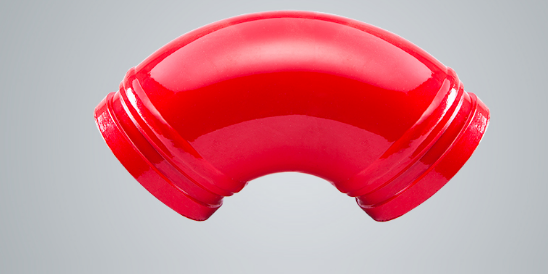Pump manufacturers recommend between three to ten pipe diameters of undisturbed straight run upstream from pump inlets.
Because process plants are designed to minimize plant floor space, it is not uncommon to find inadequate short runs of straight pipe upstream from pumps, control valves, check valves, flowmeters, and other critical process equipment. One of the most common flow disturbances found upstream from pumps in industrial process plants are 90°-degree elbows.
Eliminating upstream piping requirements for pumps and irregularities associated with elbows can be accomplished by installing Taichan Company’s 90-Degree Elbow Flow Conditioner. This flow conditioner can be installed immediately upstream from pumps to ensure a swirl-free, repeatable and equally distributed flow profile.
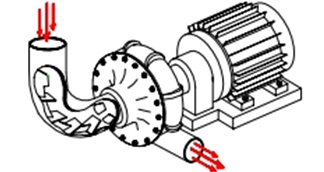
Flow Conditioning for Pump Protection Piping configurations that include 90-degree elbows introduce asymmetry and distortion resulting from accelerated flow near the
outer wall of the bend. Although the cross-sectional area of an elbow may not change from section to section, separation will occur near the outer wall as the flow encounters the adverse pressure gradient that is developed in that region. Separation also occurs near the inside of the bend and downstream of the midsection due to adverse pressure gradients and sharp turn requirements.
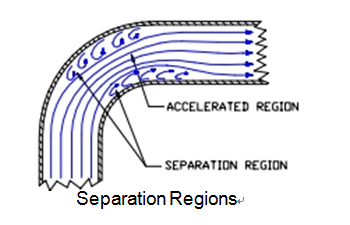
The combined separation reduces the area available to the core flow, causing the flow to be accelerated. Coriolis forces and the accelerated flow’s inertia through the bend
produce a “dual eddy” swirl pattern with two counter-rotating vortices on either side of the center plane of the elbow. The vortices produce a strong traverse flow directed toward the outside of the elbow. The induced asymmetry may not only be extreme, but persistent
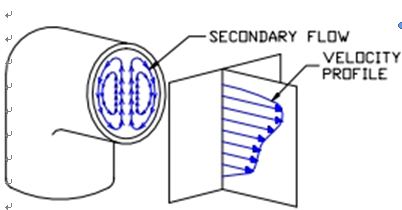
In addition, some swirl is introduced into the flow as a radial velocity component.

A single elbow close-coupled in a plane parallel to the shaft of a double suction pump generates distorted velocity profiles, vortices, and vapor pockets. The inertia of the media, as it propagates through an
elbow and into a pump, forces the flow to one side of the pump. The impeller experiences high flows on one side and cavitation on the other. This can result in severe suction recirculation, excessive bearing wear, erosion, noise, and increased maintenance cost.
Pumps require swirl-free, repeatable, and equally distributed flow profile to achieve maximum operational efficiency, thus the requirements for undisturbed upstream straight run.
Swirl reduction and profile correction occur naturally in long lengths of straight pipe due to diffusion and turbulent mixing. Anti-swirl and inclined vortex generating profile correction tab’s generate vortices that accelerate and amplify these natural pipe effects.
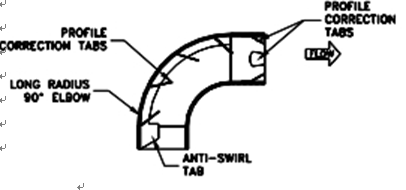
The accelerated flow near the outer bend of a standard elbow is forced to cross-mix with slower velocity regions. The resultant flow profile is optimal for pump and control valve applications.
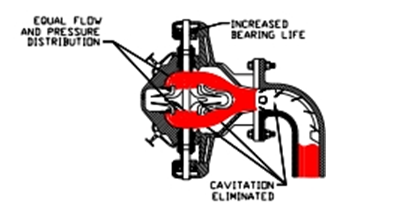
Conditioned flow into pump Requiring no upstream flow profile requirements, it has the ability to isolate flow irregularities produced by upstream disturbances such as valves, in-line probes,
and other process equipment. In addition, no settling distance is required between flow disturbances and the inlet of the elbow flow conditioner.

